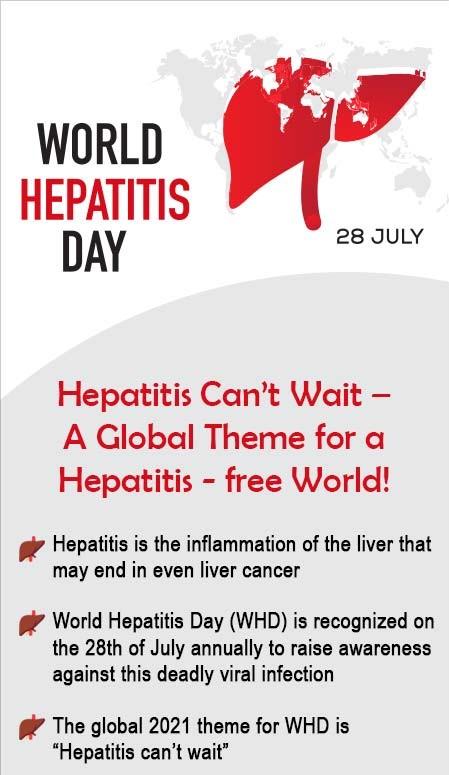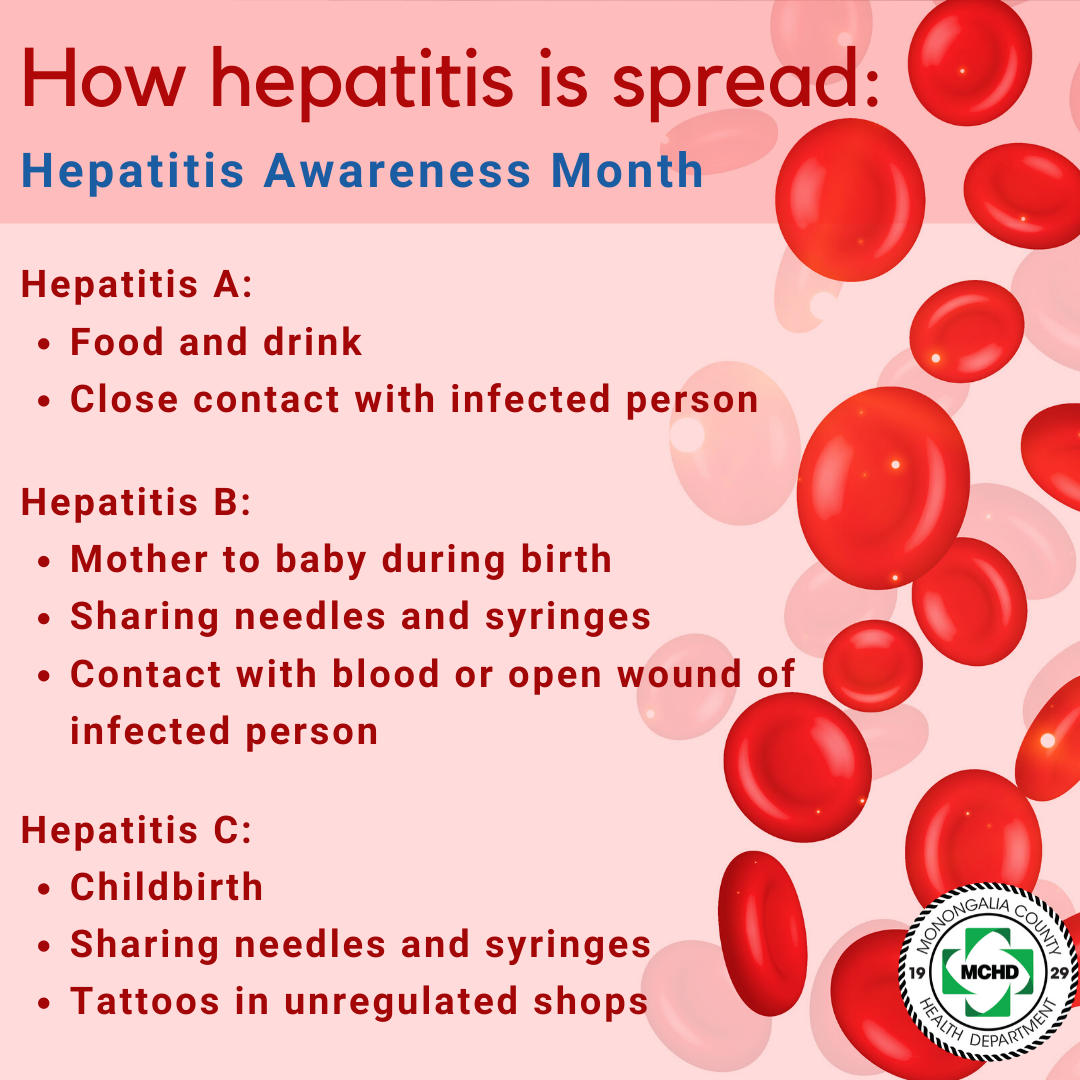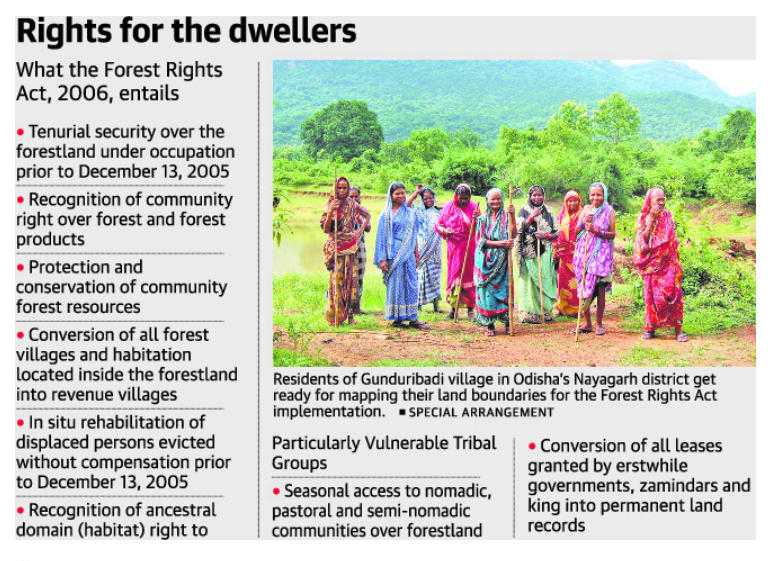Table of Contents
”UPSC News Diary For Today” is every day published in the evening between 6-7 PM and contains all current affairs articles from the day on a single platform. ”UPSC News Diary For Today” covers various topics from UPSC Syllabus and is very helpful and time managing for UPSC Aspirants. The framing of this daily current affairs compilation article is easy to read and understandable also.
In the ”UPSC News Diary For Today” article, we focus on both UPSC Preliminary and Mains exam-oriented current affairs & prepare a gist of daily important news articles from leading National Newspapers, PIB, and other various official sources.
Bharat Broadband Network Ltd (BBNL)
Bharat Broadband Network Ltd (BBNL): Why In The News?
Bharat Sanchar Nigam Limited (BSNL) and BBNL (Bharat Broadband Network Limited) merger has been approved by the Cabinet.
Bharat Broadband Network Ltd (BBNL): Impact Of the Merger?
- Bharat Sanchar Nigam Limited (BSNL) and BBNL (Bharat Broadband Network Limited) merger will boost the fibre assets under BSNL.
- The state-run telco has an optical fibre cable network of over 6.83 lakh kilometres.
- Because of this merger, BSNL will get an additional 5.67 lakh kilometres worth of optical fibre laid across 1.85 lakh village panchayats of India.
- One big benefit that this will give to the BSNL is that it will help in boosting 4G performance in rural areas.
Bharat Broadband Network Ltd (BBNL): About BBNL
- Bharat Broadband Network Limited is a Special Purpose Vehicle set up under Companies Act by Government of India.
- It has been mandated to create the National Optical Fiber Network (NOFN) in India.
- A total of around 2,50,000 Gram Panchayats spread over 6,600 Blocks and 641 Districts are to be covered by laying incremental fiber.
- The timeline for this ambitious project is two years. The project cost is estimated to be about 20,000 Cr which will be funded by the USO fund.
Birmingham Commonwealth Games 2022
Birmingham Commonwealth Games: Why In The News?
- Birmingham Commonwealth Games are scheduled to be held from July 28 to August 8 in Birmingham, England.
Birmingham Commonwealth Games: Key Points
- India will be one of 72 Commonwealth Games Associations that will be participating in the Commonwealth Games 2022 (also known as Birmingham 2022), scheduled to be held from July 28 to August 8 in Birmingham, England.
- The appearance in Birmingham 2022 will be India’s 18th at the CWG and among the 20 sports/discipline, the country’s athletes or players will take part in 9 sports including cricket, which will make it’s debut at the games.
- More than 5,000 athletes representing 72 nations and territories are set to compete in 19 sports and 280 medal events over a packed 11 days.
- Women’s T20 cricket, 3×3 basketball and 3×3 wheelchair basketball will all make their Games debuts.
- This year’s event features the largest number of events for women (136) and Para-sport athletes (42) in Games history.
Mission 2024 for FRA
Mission 2024 for FRA: Why In The News?
- Odisha is about to launch Mission 2024 for FRA by granting all kinds of forest rights whether it is for the individual, community or habitat.
- The mission, currently under Finance Department and Planning and Convergence Department scrutiny, aims at granting the tribal people their rightful ownership.
Mission 2024 for FRA: What is it?
- The Odisha government is chasing an ambitious target of completing the implementation of the Forest Rights Act (FRA) by granting all kinds of rights mandated under the historic Act by 2024.
- All tribals will be granted their rightful ownership.
- By 2024, we would be able to achieve the mandate given to the State government under the FRA,” said Ms. Chopra.
- The State government has set a target to convert 587 forest villages into revenue villages in targeted time. As of now, only 15 forest villages have been recognised as revenue villages.
- With this mission, the journey which started in 2006 would hopefully conclude on a happy note by 2024.
Gulf Cooperation Council (GCC)
Gulf Cooperation Council (GCC): Why In The News?
After proclaiming over 16 months the disengagement of the United States from West Asia, U.S. President Joe Biden made his first trip to the region on July 13-16 since taking office.
Gulf Cooperation Council (GCC): About GCC
- The GCC was formed in May 1981 against the backdrop of the Islamic revolution in Iran and the Iraq-Iran war.
- Its members – Saudi Arabia, Kuwait, the United Arab Emirates, Oman, Qatar and Bahrain – share similar political systems and a common social and cultural outlook. They are autocratic monarchies or sheikhdoms, with limited or non-existent political participation.
- Collectively, GCC countries possess almost half of the world’s oil reserves. Saudi Arabia is the most powerful member of the alliance.
- In 1984, the GCC created an embryonic collective defence force – the Saudi-based Peninsula Shield. But the GCC has failed to expand the force; Oman’s 1991 proposal to set up a 100,000-strong joint military body was turned down.
List of Integrated Check Posts (ICPs) at International Land Borders
List of Integrated Check Posts (ICPs)- Relevance for UPSC Exam
- GS Paper 2: International Relations: India and its neighbourhood- relations.
List of Integrated Check Posts (ICPs) in News
- Minister of State for Home Affairs, Shri Nisith Pramanik in a written reply to a question in the Rajya Sabha informed about various Integrated Check Posts (ICPs), bordering countries and their Date of Operationalization.
Integrated Check Posts (ICPs)
- About: ICPs are modern border infrastructure that are central to India’s connectivity plans in the region.
- Nodal Agency: The Land Ports Authority of India (LPAI) is the nodal agency for construction, operation, and management of the ICPs.
- Key Role: ICPs consist of border infrastructure for facilitation of trade and people. They also act as important centres to advance other multi-modal intra- and inter-regional connectivity initiatives, such as-
- Improving rail connectivity;
- Implementing the Bangladesh–Bhutan–India–Nepal Motor Vehicles Agreement (BBIN-MVA);
- The use of Chattogram and Mongla ports in Bangladesh to transport cargo to India’s Northeast region; and
- The Kaladan Multi-modal Transit Transport Project to connect Southeast Asia to South Asia.
- ICP at Dera Baba Nanak: Passenger Terminal Building (PTB) at Dera Baba Nanak is used only to facilitate pilgrims to visit the Gurudwara Kartarpur Sahib ji in Pakistan.
List of Integrated Check Posts (ICPs)- Location, Concerned State, and Bordering Country
| S. No. | Location | State | Bordering Country | Year of Operationalization |
| 1. | Attari | Punjab | Pakistan | 2012 |
| 2. | Agartala | Tripura | Bangladesh | 2013 |
| 3. | Petrapole | West Bengal | Bangladesh | 2016 |
| 4. | Raxaul | Bihar | Nepal | 2016 |
| 5. | Jogbani | Bihar | Nepal | 2016 |
| 6. | Moreh | Manipur | Myanmar | 2018 |
| 7. | Sutarkandi | Assam | Bangladesh | 2019 |
| 8. | PTB Dera Baba Nanak | Punjab | Pakistan | 2019 |
| 9. | Srimantapur | Tripura | Bangladesh | 2020 |
Proposed Integrated Check Posts (ICPs)
- Last year (2021), Indian government also decided to set up seven new ICPs- Five on the Indo-Bangladesh border and one ICP each on borders with Nepal and Bhutan.
- The five ICPs on the Indo-Bangladesh borders will be set up at-
- Changrabandha in Cooch Behar,
- Phulbari in Jalpaiguri,
- Hilli in South Dinajpur,
- Mahadipur in Malda and
- Gojadanga in North 24-Parganas.
- One ICP will be set up at Panitanki in Darjeeling district bordering Nepal and another at Jaigaon in Alipurduar bordering Bhutan.
Border Infrastructure and Management Scheme
World Hepatitis Day
World Hepatitis Day- A Future Free of Hepatitis- Relevance for UPSC Exam
General Studies II- Issues relating to development and management of Social Sector/Services relating to Health, Education, Human Resources.

In News
World Hepatitis Day is observed each year on 28th July to enhance awareness of viral hepatitis and this year the World Health Organization (WHO) is highlighting the need to bring hepatitis care closer to the people in need
Hepatitis can be life threatening unless it is detected in a timely manner and there is good treatment available. On World Hepatitis Day, therefore, there is a push for more global awareness about the infection, its diagnosis, and how to prevent it, among other things.
 What is Hepatitis?
What is Hepatitis?
- Hepatitis refers to inflammation of the liver —the irritation or swelling of the liver cells from any cause.
- It can be acute -inflammation of the liver that presents with sickness — jaundice, fever, vomiting or chronic -inflammation of the liver that lasts more than six months, but essentially showing no symptoms.
- Can cause permanent damage to the liver (cirrhosis) and even liver cancer
Types of Hepatitis
- Hepatitis A is a contagious liver infection that is caused by the hepatitis A virus. People with this type of hepatitis can feel sick for weeks or months, but usually recover completely with no liver damage.
- Hepatitis B can be more severe than hepatitis A. For some people, the infection only lasts for a few weeks; this is acute hepatitis B. Those who develop chronic hepatitis B will have a lifelong infection that can cause liver cancer, cirrhosis or death.
- The third type, Hepatitis C, is spread when infected blood enters the body of an uninfected person. This can happen when sharing needles, being born to an infected mother or tattoos from unregulated places.
- Hepatitis D is an infection that can only occur in people already infected with hepatitis B. Hepatitis D can be acute or chronic. The hepatitis D virus combined with hepatitis B can cause liver disease to progress faster than hepatitis B alone. There is no vaccine, but it can be prevented by the hepatitis B vaccine in people who are not already infected.
- Hepatitis E is not common in developed countries. The virus can be spread by contaminated water, undercooked pork or deer meat and shellfish. It is often less severe than other strains of the virus; most recover completely and are very unlikely to progress from acute to chronic infection Hepatitis E is not common in developed countries. The virus can be spread by contaminated water, undercooked pork or deer meat and shellfish. It is often less severe than other strains of the virus; most recover completely and are very unlikely to progress from acute to chronic infection
Causes
- Caused by a group of viruses known as the Hepatotropic(liver directed) viruses, including A, B, C, D and E.
- Other viruses such as Varicellavirus that causes chicken pox and SARS-CoV-2 causing Covid-19 may injure the liver too.
- Drugs and alcohol overdose, fat buildup in the liver(fatty liver hepatitis) or an autoimmune process in which a person’s body makes antibodies that attack the liver (autoimmune hepatitis).
Spread
- Viral hepatitis A and E are spread by contaminated water or exposure to the faecal matter of an infected person.
- Hepatitis B, C and D are transmitted through blood and body fluids. Unprotected sex, sharing needles and grooming accessories such as nail cutters, razors etc.
- Can be transmitted from mother to child.

Prevention
- Ensure clean and safe drinking water.
- Avoid sharing a razor, nail cutter, needles etc.
- Avoid unprotected sex.
- Every newborn child should be vaccinated against these viruses.
- Those with liver disease should especially get vaccinated as viral hepatitis may be severe in them.
Treatment
- Hepatitis A and E are self-limiting diseases a and require no specific antiviral medications.
- For Hepatitis B and C, effective medications are available.
Government Initiatives
National Viral Hepatitis Control Programme
AIM
- Combat hepatitis and achieve country wide elimination of Hepatitis C by 2030
- Achieve significant reduction in the infected population, morbidity and mortality associated with Hepatitis B and C viz. Cirrhosis and Hepato-cellular carcinoma (liver cancer)
- Reduce the risk, morbidity and mortality due to Hepatitis A and E.
Objectives
- Enhance community awareness on hepatitis and lay stress on preventive measures among general population especially high-risk groups and in hotspots.
- Provide early diagnosis and management of viral hepatitis at all levels of healthcare
- Develop standard diagnostic and treatment protocols for management of viral hepatitis and its complications.
- Strengthen the existing infrastructure facilities, build capacities of existing human resource and raise additional human resources, where required, for providing comprehensive services for management of viral hepatitis and its complications in all districts of the country.
- Develop linkages with the existing National programmes towards awareness, prevention, diagnosis and treatment for viral hepatitis.
- Develop a web-based “Viral Hepatitis Information and Management System” to maintain a registry of persons affected with viral hepatitis and its sequelae
Components
- Preventive component: This remains the cornerstone of the NVHCP. It will include
- Awareness generation
- Immunization of Hepatitis B (birth dose, high risk groups, health care workers)
- Safety of blood and blood products
- Injection safety, safe socio-cultural practices
- Safe drinking water, hygiene and sanitary toilets
- Diagnosis and Treatment:
- Screening of pregnant women for HBsAg to be done in areas where institutional deliveries are < 80% to ensure their referral for institutional delivery for birth dose Hepatitis B vaccination.
- Free screening, diagnosis and treatment for both hepatitis B and C would be made available at all levels of health care in a phased manner.
- Provision of linkages, including with private sector and not for profit institutions,for diagnosis and treatment.
- Engagement with community/peer support to enhance and ensure adherence to treatment and demand generation.
- Monitoring and Evaluation, Surveillance and Research Effective linkages to the surveillance system would be established and operational research would be undertaken through Department of Health Research (DHR). Standardised M&E framework would be developed and an online web based system established.
- Training and capacity Building: This would be a continuous process and will be supported by NCDC, ILBS and state tertiary care institutes and coordinated by NVHCP. The hepatitis induction and update programs for all level of health care workers would be made available using both, the traditional cascade model of training through master trainers and various platforms available for enabling electronic, e-learning and e-courses.
Schemes For Development Of Schedule Tribes
Schemes For Development Of Schedule Tribes: Introduction
- There are over 730 Scheduled Tribes (STs) notified under Article 342 of the Constitution of India, spread over different States and Union Territories (UTs) of the Country.
- Government is implementing Tribal Sub-Plan (TSP)/Schedule Tribe Component (STC)/Development Action Plan for STs (DAPST) for overall development of tribal people across the country.
Schemes For Development Of Schedule Tribes: Why privileges or special rights for Scheduled Tribes?
- Scheduled Tribes being backward and isolated from the rest of the population are not able to exercise their rights. In order to empower them to be able to exercise their rights special provisions have been made in the Constitution.
- Framers of the Constitution took note of this fact and incorporated enabling provisions in the Constitution in the form of reservation and measures to be taken to empower them to be able to avail the opportunities.
- Some people call these provisions as privileges for the Scheduled Tribes but these are only the enabling provisions so that Scheduled Tribes can avail the opportunities and exercise their rights and safeguards.
Schemes For Development Of Schedule Tribes: Special Grants and Scholarships
Grants under Article 275(1) of the Constitution
Under the programme of Provision to Article 275(1) of Constitution, Grants are released to 26 States, having ST population for raising the level of Administration in Scheduled Areas and for the welfare of tribal people. This is a Special Area Programme and 100% grants are provided to States. Funds are released to the state governments depending on the felt needs of ST population to bridge the gap in infrastructure activities in the fields of education, health, skill development, livelihood, drinking water, sanitation, etc.
Eklavya Model Residential Schools (EMRS)
The scheme of Eklavya Model Residential Schools (EMRSs) was introduced in the year 1997-98 to impart quality education exclusively to ST children with an objective to provide quality middle and high-level education to Scheduled Tribe (ST) students in remote areas in order to enable them to avail of reservation in high and professional educational courses and get jobs in government and public and private sectors.
To realize this mission, it has been decided that by the year 2022, every block with more than 50% ST population and at least 20,000 tribal persons, will have an Eklavya Model Residential School. Eklavya schools will be on par with Navodaya Vidyalayas and will have special facilities for preserving local art and culture besides providing training in sports and skill development.
Grant-in-Aid to Voluntary Organizations working for the welfare of Scheduled Tribes
Under the scheme of Grant-in-Aid to Voluntary Organizations working for the welfare of Scheduled Tribes, the Ministry funds projects in the fields of Education and Health, covering residential schools, non-residential schools, hostels and mobile dispensaries, ten or more bedded hospitals, etc.
Pre – Matric Scholarships to ST students
The scheme is applicable to students who are studying in Classes IX –X. Parental income from all sources should not be more than Rs. 2.50 lakhs per annum. Scholarship of Rs. 225/-per month for day scholars and Rs. 525/-per month for hostellers is given for a period of 10 months in a year. Scholarship is disbursed through the State Government/UT Administration. Funding ratio is 75:25 between Centre and States for all States except North East and Hills States like Himachal Pradesh, Uttarakhand and Jammu & Kashmir where it is 90:10. For UT’s without legislature sharing pattern is 100% Central Share.
Post Matric Scholarship to ST students
The objective of the scheme is to provide financial assistance to the Scheduled Tribe students studying at post-matriculation or post-secondary levels to enable them to complete their education. Parental income from all sources should not be more than Rs. 2.50 lakhs per annum. Compulsory fees charged by educational institutions are reimbursed subject to the limit fixed by the concerned State Fee fixation committee and scholarship amount of Rs. 230 to Rs. 1200 per month, depending upon the course of study is paid. The Scheme is implemented by the State Governments and Union Territory Administrations. Funding ratio is 75:25 between Centre and States for all States except NE and Hilly States/UTs of Himachal Pradesh, Uttarakhand and Jammu & Kashmir where it is 90:10. For UT’s without legislature sharing pattern is 100% Central Share.
National Overseas Scholarships for ST Candidates for Studying Abroad
The Scheme provides for financial assistance to selected students to pursue Post Graduation, PhD & Post-Doctoral study abroad. A total of 20 awards are given every year. Of these, 17 awards are for STs and 3 awards for students belonging to Particularly Vulnerable Tribal Groups (PVTGs). Parental/family income from all sources should not exceed Rs. 6.00 lakhs per annum.
National Fellowship & Scholarship for Higher Education of ST students:
- National Scholarship – (Top class) Scheme [Graduate level]
- National Fellowship for ST students
Schemes For Development Of Schedule Tribes: Central Assistance For Tribal Economy
Special Central Assistance to Tribal Sub-Scheme (SCA to TSS)
Under scheme of Special Central Assistance to Tribal Sub-Scheme (SCA to TSS) 100% grants is provided to the State Governments for activities related to education, health, sanitation, water supply, livelihood, skill development, Ashram Schools, Boys and Girls Hostels, Vocational Training Centers (VTCs), minor infrastructure, etc. to bridge the gap between Scheduled Tribe (ST) population and others as a critical gap filling measure.
Development of Particularly Vulnerable Tribal Groups (PVTGs)
The scheme of Development of PVTGs covers 75 identified PVTGs among Scheduled Tribes in 18 States and UT of Andaman & Nicobar Islands.
Institutional Support for Development & Marketing of Tribal Products/Produce (Central Sector Scheme)
The Tribal Cooperative Marketing Development Federation of India Limited (TRIFED) is a Multi-State Cooperative Society set up in 1987 under the Multi State Cooperative Societies Act, 1984 (now the Multi State Cooperative Societies Act, 2002) which functions both as a service provider and market developer for tribal products. It markets tribal products through the network of its retail outlets ‘TRIBES INDIA’ in the country. As a capacity builder, it also imparts training to Scheduled Tribe Artisans and Minor Forest Produce (MFP) gatherers.
The mechanism for Marketing of Minor Forest Produce (MFP) through Minimum Support Price (MSP) & Development of Value Chain for MFP
A Scheme “Mechanism for Marketing of Minor Forest Produce (MFP) through Minimum Support Price (MSP) and Development of Value Chain for MFP” was introduced by the Ministry of Tribal Affairs in the year 2013-14.
Support to National/State Scheduled Tribes Finance and Development Corporations (NSTFDC/STFDCS)
National Scheduled Tribes Finance and Development Corporation (NSTFDC) is an apex organisation set up on 10.04.2001, exclusively for economic development of Scheduled Tribes.
Schemes For Development Of Schedule Tribes: Preserving Tribal Culture
Support to Tribal Research Institutes (TRIs)
Within the set of TRIs, there are cultural museum, library, training centre, research wing etc.
Tribal Festivals, Research Information and Mass Education
Through the scheme, promotion of rich tribal cultural heritage, dissemination of information and creation of awareness are given attention to which includes organization of Tribal Craft & Food Festivals, Sports, Music, Dance & Photo Competitions, Science, Art & Craft Expos, Workshops, Seminars, Production of documentary films.
National Family Planning Summit 2022
National Family Planning Summit 2022- Relevance for UPSC Exam
- GS Paper 2: Governance, Administration and Challenges- Government policies and interventions for development in various sectors and issues arising out of their design and implementation.
National Family Planning Summit 2022 in News
- Recently, the Union Minister of State for Health and Family Welfare chaired the National Family Planning Summit, 2022.
- She stated that India understood the importance of Family Planning early and went on to be the first country to launch a National Family Planning programme in 1952.
National Family Planning Summit 2022
- About: National Family Planning Summit 2022 was organized to recognize the achievements of various states/UTs in family planning and create awareness about the importance of family planning.
- Theme: National Family Planning Summit 2022 theme was “Sustaining efforts, Steering Partnerships, Shaping Vision in Family Planning – Sabka Saath, Sabka Vishwas, Sabka Prayas & Sabka Vikas”.
- Organization: National Family Planning Summit 2022 was organized by Union Ministry of Health and Family Welfare.
National Family Planning Summit 2022- Key Initiatives
- During National Family Planning Summit 2022, the Minister also unveiled the India Family Planning 2030 vision document and launched
- The Medical Eligibility Criteria (MEC) Wheel Application,
- E-Module of Family Planning Logistics Management System (FPLMIS) and
- Digital Archive on Family Planning under the category of Digital Intervention.
- To empower the community and show the Government’s unwavering commitment to providing inclusive services, ministry also introduced-
- The National Family Planning helpline manual,
- Community Health Officer (CHO) booklet, and
- ASHA brochure and leaflet (Family Planning).
India Achieves Replacement Level TFR
- India has achieved replacement level fertility with as many as 31 states/ UTs having achieved a Total Fertility Rate of 2.1 or less and modern contraceptive usage has increased substantially to 56.5% (NFHS 5).
- NFHS-5 data shows an overall positive shift towards spacing methods which would be instrumental in impacting positively the maternal and infant mortality and morbidity.
Mission Parivar Vikas (MPV)- National Family Planning Program
- Mission Parivar Vikas (MPV) 2016 has given further impetus to the National Family Planning Program.
- National Family Planning Program: Under the scheme, innovative strategies like distribution of Nayi Pehel kits, Saas Bahu Sammelan and Saarthi vans are helping to reach out to community and initiate dialogues on Family Planning, healthy birth spacing and importance of small families.
- More than 17 lakh Nayi Pehel kits have been distributed to newly-weds,
- Over 7 lakh Saas bahu sammelans conducted, and
- Over 32 lakh clients have been counselled through Saarthi vans since inception.
Family Planning (FP) 2030 Partnership
- About: Family Planning (FP) 2030 Partnership is a global initiative for family planning providing a space for stakeholders to convene, align, share knowledge, broker resources, and advance the field.
- It is the successor to FP2020.
- India’s Participation: As part of India’s commitment to this partnership, 3 billion USD has been invested in family planning.
- Between 2012 and 2020, India added more than 1.5 crore additional users for modern contraceptives thereby increasing the modern contraceptive use substantially.
What is replacement level TFR?
- According to the United Nations population division, countries experiencing below-replacement fertility- lower than 2.1 children per woman- indicates that a generation is not producing enough children to replace itself, eventually leading to an outright reduction in population.
5 New Indian Wetlands Recognized as Ramsar Sites
Indian Wetlands Recognized as Ramsar Sites- Relevance for UPSC Exam
- GS Paper 3: Environment- Conservation, environmental pollution and degradation.
Indian Wetlands Recognized as Ramsar Sites in News
- Recently, government informed that five new Indian sites have been recognised as wetlandsof international importance, as part of the Ramsar Convention.
List of Five New Wetlands designated as Ramsar Sites
- Total Ramsar Wetland in India: With recognition of five new Indian Wetlands as the Ramsar Sites of International Importance, India has now 54 Ramsar sites in the country from the previous 49.
- List of the New Ramsar Sites: The Newly Inducted wetland sites are from-
- Three wetlands from Tamil Nadu-
- Karikili Bird Sanctuary,
- Pallikaranai Marsh Reserve Forest and
- Pichavaram Mangrove).
- One in Mizoram-
- Pala wetland
- One in Madhya Pradesh-
- Sakhya Sagar
- Three wetlands from Tamil Nadu-
What is Ramsar recognition?
- Ramsar recognition is the identification of wetlands around the world, which are of international importance, especially if they provide habitat to waterfowl(about 180 species of birds).
- There is international interest and cooperation in the conservation of such wetlands and a judicious use of their resources.
About Ramsar convention
- The Ramsar Convention on Wetlands is the oldest of the modern global intergovernmental environmental agreements.
- The treaty was negotiated through the 1960s by countries and non – governmental organizations concerned about the increasing loss and degradation of wetland habitat for migratory waterbirds.
- It was adopted in the Iranian city of Ramsar in 1971 and came into force in 1975.
- Since then, the Convention on Wetlands has been known as the Ramsar Convention.
- The Contracting Parties approved the Fourth Strategic Plan for 2016-2024 at COP12.
- Ramsar Convention’s broad aims are to halt the worldwide loss of wetlands and to conserve, through wise use and management, those that remain.
What are wetlands?
- According to WWF, a wetland is a place where the land is covered by water, either salt, fresh or somewhere in between.
- Marshes and ponds, the edge of a lake or ocean, the delta at the mouth of a river, low-lying areas that frequently flood—all of these are wetlands.
Types of wetlands
Under the Ramsar convention, wetlands have been classified into following three categories:
- Marine/Coastal Wetlands: includes permanent shallow marine waters; coral reefs; estuarine waters; intertidal marshes, coastal lagoons, among others.
- Inland wetlands: includes Permanent inland deltas; Permanent rivers/streams/creeks; alpine wetlands, tundra wetlands; waterfalls; geothermal wetlands, among others.
- Human-made wetlands: aquaculture ponds; irrigated land; water storage areas; wastewater treatment areas; Canals and drainage channels, ditches; among others.
List of Ramsar Wetland Sites in India
National Policy on Cooperation
National Policy on Cooperation- Relevance for UPSC Exam
- GS Paper 2: Governance, Administration and Challenges- Government policies and interventions for development in various sectors and issues arising out of their design and implementation.
National Policy on Cooperation in News
- Recently, suggestions on the draft Policy on Cooperation were sought from the stakeholders including general public through the website of the Ministry of Cooperation.
- The Government is formulating a new national level policy for cooperatives.
National Conference on the new Cooperation Policy
- About: National Conference on the new Cooperation Policy was held on 12th and 13th April, 2022 with Cooperation Secretaries / RCSs from all the States/UTs.
- Agenda: In National Conference on the new Cooperation Policy discussions were inter alia held on-
- Legal framework, identification of regulatory, policy & operational barriers;
- Ease of doing business;
- Reforms for strengthening governance;
- Promoting new and social cooperatives;
- Revitalizing defunct ones;
- Making cooperatives vibrant economic entities;
- Cooperation among cooperatives and increasing membership of cooperatives.
Steps taken by Government to Strengthen India’s Cooperative Architecture
- Income Tax Reduction: Government has provided relief to cooperative sugar mills by clarifying that they shall not be subjected to additional income tax for paying higher sugarcane prices to farmers up to the Fair and Remunerative Price (FRP) or State Advised Price (SAP).
- Surcharge Reduction: Government reduced the surcharge for cooperative societies from 12% to 7% for those having a total income of more than Rs. 1 crore and up to Rs. 10 crore.
- Further, to provide a level playing field between co- operative societies and companies, Minimum Alternate Tax (MAT) rate for cooperative societies was reduced from 18.5% to 15%.
- Credit Guarantee Fund Trust for Micro and Small Enterprises (CGTMSE): It notified non-scheduled Urban Co-operative Banks, State Co-operative Banks and District Central Co-operative Banks as Member Lending Institutions of the scheme with specified eligibility criteria.
- This will help in providing adequate, affordable and timely credit to the co-operative institutions to give a boost to the co-operative based economic development model.
- Expansion of mandate of Government e-Marketplace – Special Purpose Vehicle (GeM – SPV): It has been expanded to allow cooperative societies to register as buyers on the GeM platform.
- Digitization of Primary Agriculture Credit Societies (PACS): a centrally sponsored project for digitalization of 63,000 functional Primary Agriculture Credit Societies (PACS), with a budgetary outlay of Rs 2,516 crore, has been sanctioned to revitalize the cooperative sector.
- Model By-laws for PACS: In order to diversify the business activities of PACS and make them vibrant multipurpose economic entities, draft model Bye-Laws are being prepared in consultation with State Governments, National Cooperative Federations and other stakeholders.
- Scheme to Promote Cooperation: A new scheme titled “Cooperation to Prosperity” is being formulated in consultation with all the stakeholders for all-round development of cooperatives at all levels.
- National Co-operative Database: In order to facilitate the Government to make appropriate policy interventions, a National Co-operative Database is being created in consultation with State/UT Governments, National Co-operative Federations and other stakeholders.
- Re-orienting Training and Education: In order to modernize and professionalize the education and training in the cooperative sector, steps are being taken to reorient the training and educational Cooperative Institutions in consultation with all the stakeholders.
Constitutional Provisions Regarding Cooperatives
- The Constitution (97th Amendment) Act, 2011 added a new “Part IXB” right after Part IXA (Municipals) regarding the cooperatives working in India.
- Article 19(1)(c) under Part III of the Constitution: provides for “cooperatives”, allowing all the citizens to form cooperatives by giving elevating it to the status of a fundamental right.
- Article 43B was added in the Directive Principles of State Policy (Part IV) regarding the “promotion of cooperative societies”.
National Conference on Cooperation Policy







 TSPSC Group 1 Question Paper 2024, Downl...
TSPSC Group 1 Question Paper 2024, Downl...
 TSPSC Group 1 Answer key 2024 Out, Downl...
TSPSC Group 1 Answer key 2024 Out, Downl...
 UPSC Prelims 2024 Question Paper, Downlo...
UPSC Prelims 2024 Question Paper, Downlo...
